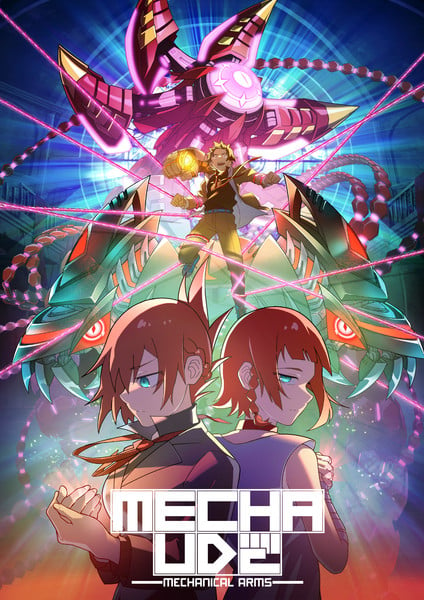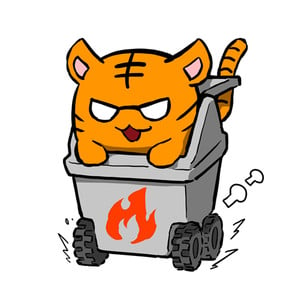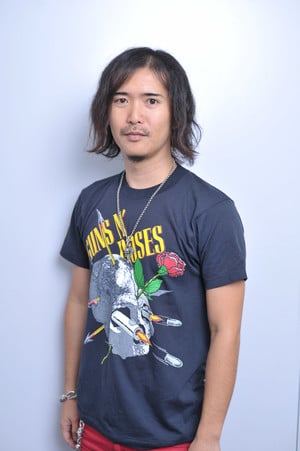From Pilot to Full-Series: Creating Mecha-Ude: Mechanical Arms
by Lynzee Loveridge,After garnering impressive support from fans in 2019, Mecha-Ude: Mechanical Arms is well on its way to its full-fledged premiere. Originally a pilot supported by crowdfunding efforts, we sat down with director Okamoto and Pony Canyon producer Tetsuya Kinoshita to discuss how the series has evolved ahead of its premiere in October, how to design an emotive mechanical arm, and what they are most looking forward to in this expanded version of the original concept.

Mecha-Ude first debuted as a pilot anime episode in 2018. Since its debut, how has the anime series process progressed? Were there a lot of behind-the-scenes discussions to go from the pilot to the series?
OKAMOTO: During the production of the pilot episode, we were already considering the possibility of a series. The pilot was originally produced as episode 4 of a planned 12-episode series. However, after reviewing the series structure, we decided to reassign the pilot episode to episode 3. So, the upcoming anime series episode 3 is based on the pilot episode. We then re-examined the surrounding storylines and constructed the entire series accordingly.
Tetsuya KINOSHITA: I first learned about Mecha-Ude after the pilot episode was completed. After seeing the pilot episode provided by TriF Studio, I proposed the idea of turning it into an anime series. I realized that producing a series with just TriF Studio alone would be very time-consuming, so I met with many animation studios to explore collaboration possibilities. Their methods of animation production were unique, developed as a system to work with limited personnel and time, but adapting these methods to the current mainstream anime production approach required intricate and time-consuming efforts. Therefore, the collaboration proved to be quite challenging, and as a result, we decided to proceed with the production solely by TriF Studio over an extended period.
For the anime series production from the pilot version, we suggested music by Hiroyuki SAWANO, KOHTA YAMAMOTO, and DAIKI, and after seeing the completed work, I felt that this was a good choice.
There were numerous discussions throughout the process, but ultimately, the story is based on the premise of delivering content that aligns with the expectations of viewers who enjoyed the pilot episode.

OKAMOTO: TriF Studio began in 2012 as a student and young creator group known as "TriF," which was initially focused on creating independent films using CG and VFX. Over time, the group transitioned into a freelance creator team called "TriF Studio," working on short-form videos such as music videos and commercials. It was during this period that the studio ventured into anime production, leading to the start of the "Mecha-Ude" project. Today, TriF Studio is primarily centered around anime production.
I joined TriF Studio as a part-time staff working on coloring animation during my student days. It was at this time that I met Aso-san.
When we spoke last year, you mentioned you created most of the sakuga for the pilot. Is that true for the series as well, or have you had to take on other tasks?
OKAMOTO: For the anime series, I am focusing primarily on directing. While I do handle some of the animation work, the majority of it is being managed by the new staff who have joined us. Fortunately, with the completion of the pilot episode and the support it garnered for the series, we have had an increase in the number of staff members contributing to the project.
The latest promotional video (PV 3) focuses on the relationship between Hikaru and Aki. What makes these characters appealing, in your opinion?
OKAMOTO: I believe the charm of these characters lies in their imperfections and weaknesses.
Hikaru is an ordinary middle school student who, while interacting with extraordinary beings like Alma of Mecha-Ude User and Aki, struggles with feelings of inadequacy due to his own perceived lack of special qualities. This sense of inferiority is something many people can relate to in real life, making Hikaru's character quite relatable to those who feel overshadowed by others' unique attributes.
On the other hand, Aki may initially seem strong, but sometimes she is so focused she cannot see anything else around her. This complexity and the fact that she is more than just a strong character adds depth to her appeal.
KINOSHITA: Characters like Hikaru, Aki, and Kagami have a dynamic and energetic presence that makes watching them enjoyable. Their design feels familiar and charming, almost as if it's something you've seen before. It's likely that the design intentionally embraces a classic shonen manga style, which may be rare these days, adding to its appeal.
Various properties have integrated a sort of "mechanical arm," but Alma is very distinctive. What were the design approach and references for creating Alma?
OKAMOTO: The idea for Alma came from the concept that hands, after the face, convey a wide range of expressions. I wanted to introduce the arm as a living entity. The choice to make it mechanical stemmed from the desire to create something with characteristics completely opposite to those of humans. I thought it would be interesting if an inorganic machine could communicate in a way similar to an organic being.
Initially, the design did not include eyes, but adding them helped enhance the living, organic quality of the design. For inspiration, I referred to the character Migi from Parasyte, which influenced the development of Alma's distinctive appearance.

OKAMOTO: In the anime series, we delve deeper into the dramas of characters like Aki and Kagami, beyond just Hikaru and Alma, so I'm excited for viewers to explore these new aspects. Additionally, the series will feature many more Mecha-Ude and Mecha-Ude users compared to the pilot episode, so I hope everyone finds their favorite characters among them!
KINOSHITA: Although I was not involved in the production of the pilot episode, I understand that the overall structure and concept of the Mecha-Ude anime series were already in place at that time. I heard that the pilot episode was an anime adaptation of the fourth episode, which is quite interesting, given that the first episode itself was not animated.
What excites me most is the opportunity for viewers to experience Hikaru's growth and his journey with Alma throughout a full season. The slow, immersive development of these characters and their stories is one of the greatest pleasures of the anime series. After watching the series, I hope it inspires viewers to take a step forward, gather courage, and embrace new challenges. It would make me very happy if the series motivates people in such a positive way.
For those interested in the Mecha-Ude series but have not seen the pilot, will they be able to jump right in, or do you recommend they watch the pilot first?
OKAMOTO: Either option is perfectly fine. The pilot episode was designed as one episode within the anime series, so you can enjoy the series without having seen the pilot. For those who have already watched the pilot, you'll get to see an even more refined version of that content in the series, so I hope you look forward to the broadcast or streaming!
KINOSHITA: The content of the pilot episode has been incorporated into the anime series as episode 3, so it is absolutely fine to start with the anime series without having seen the pilot. You can enjoy the series from the beginning without any prior knowledge of the pilot episode. However, if you're interested, definitely check out the pilot as well! It could be interesting to compare how Mecha-Ude has evolved from the pilot to the series.
I also hope that the way Mecha-Ude came to be as an original anime will inspire and encourage artists and creators who aspire to work in all content productions.
Mecha-Ude: Mechanical Arms will premiere in October. Crunchyroll announced it will stream the series as it airs in Japan. Series director Okamoto and TriF Studio representative Shūichi Asō will attend Anime Matsuri in Houston, Texas, where Mecha-Ude episodes 1-2 will premiere on August 10 at 12pm CDT.
discuss this in the forum |
this article has been modified since it was originally posted; see change history